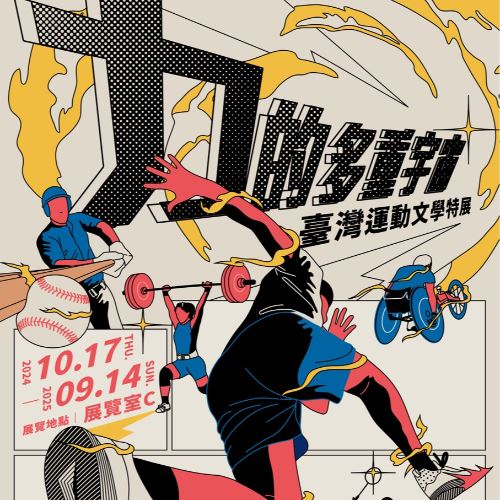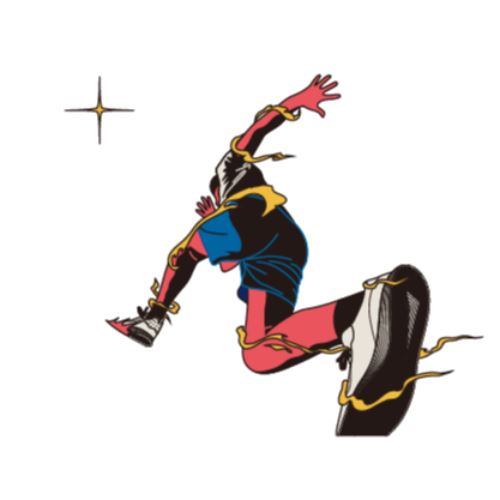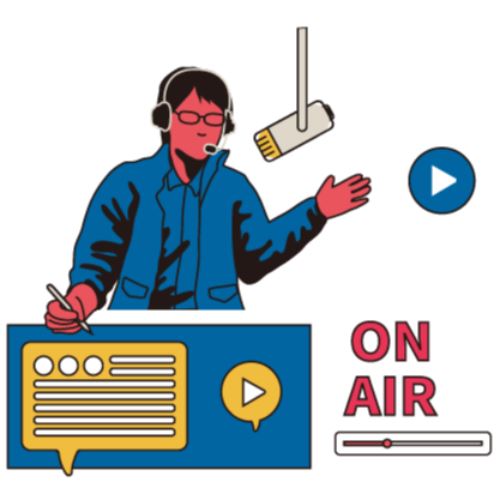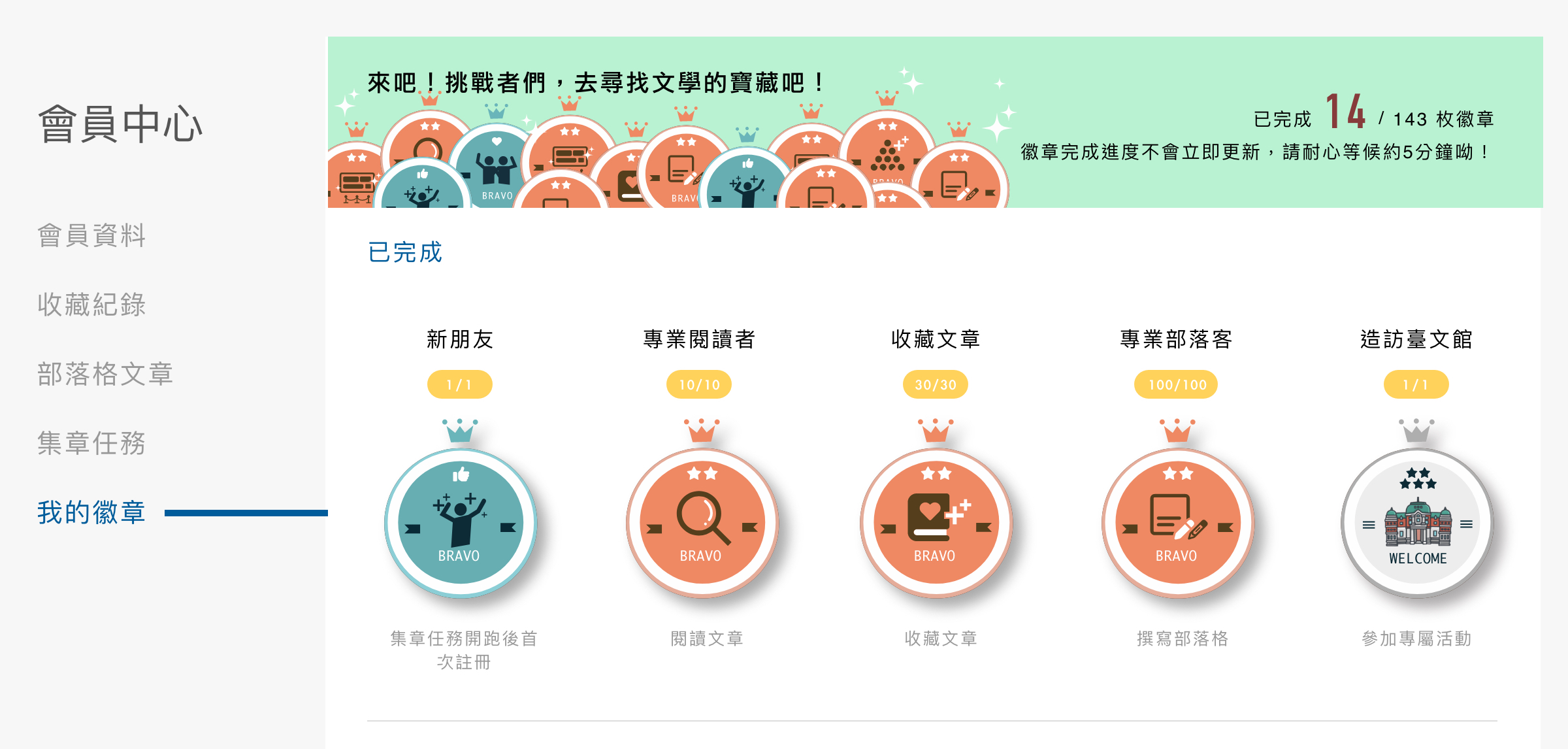The Strength of Diverse Bodies in Motion
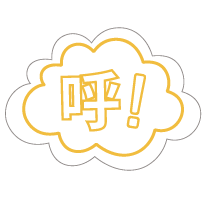
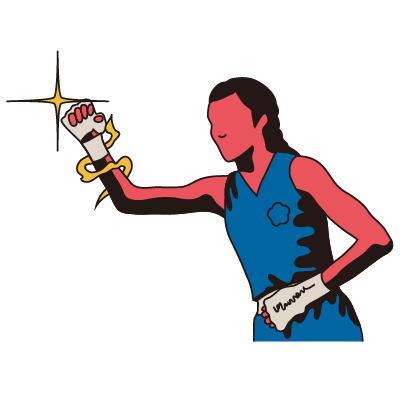
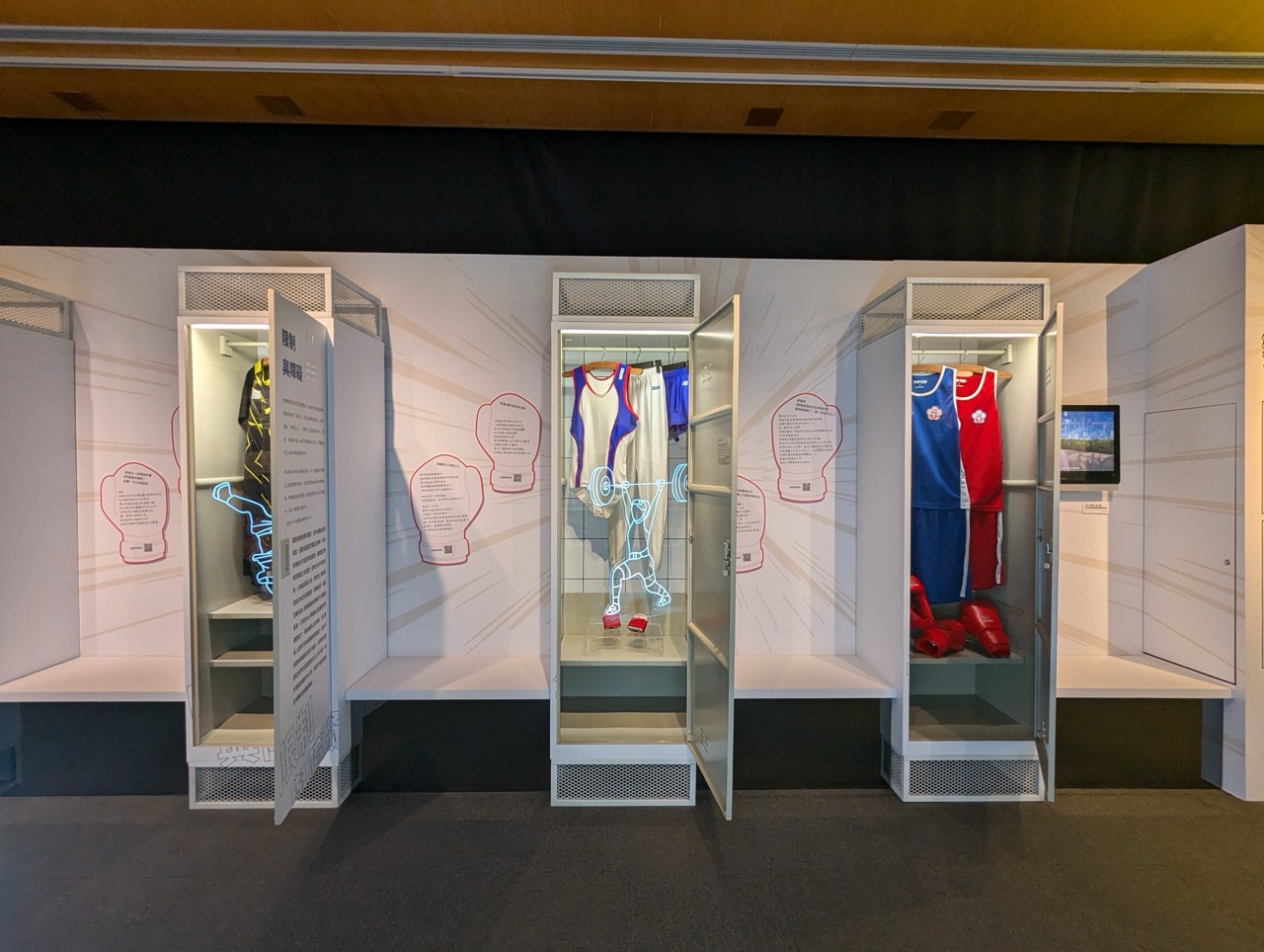
Sports have traditionally been portrayed as a relatively masculine activity; say the word "athlete," and what often comes to mind is an image of a robust man, all limbs intact. However, sports are not merely competitions with set rules; they are opportunities for everyone to understand their own bodies. People of different genders and gender expressions can all find joy in sports and show different performances. can all find joy in sports and exhibit a wide range of motions.
Sports covers all possibilities of physical expression. Similarly, the human body varies in form, influenced by factors such as one's biological sex, ethnicity, age, and physical limitations. When running on a track, diverse bodies showcase equally diverse performances of spectacular strength. Literature can reveal the limits and possibilities brought about by the body and break down notions of a singular narrative on sports.
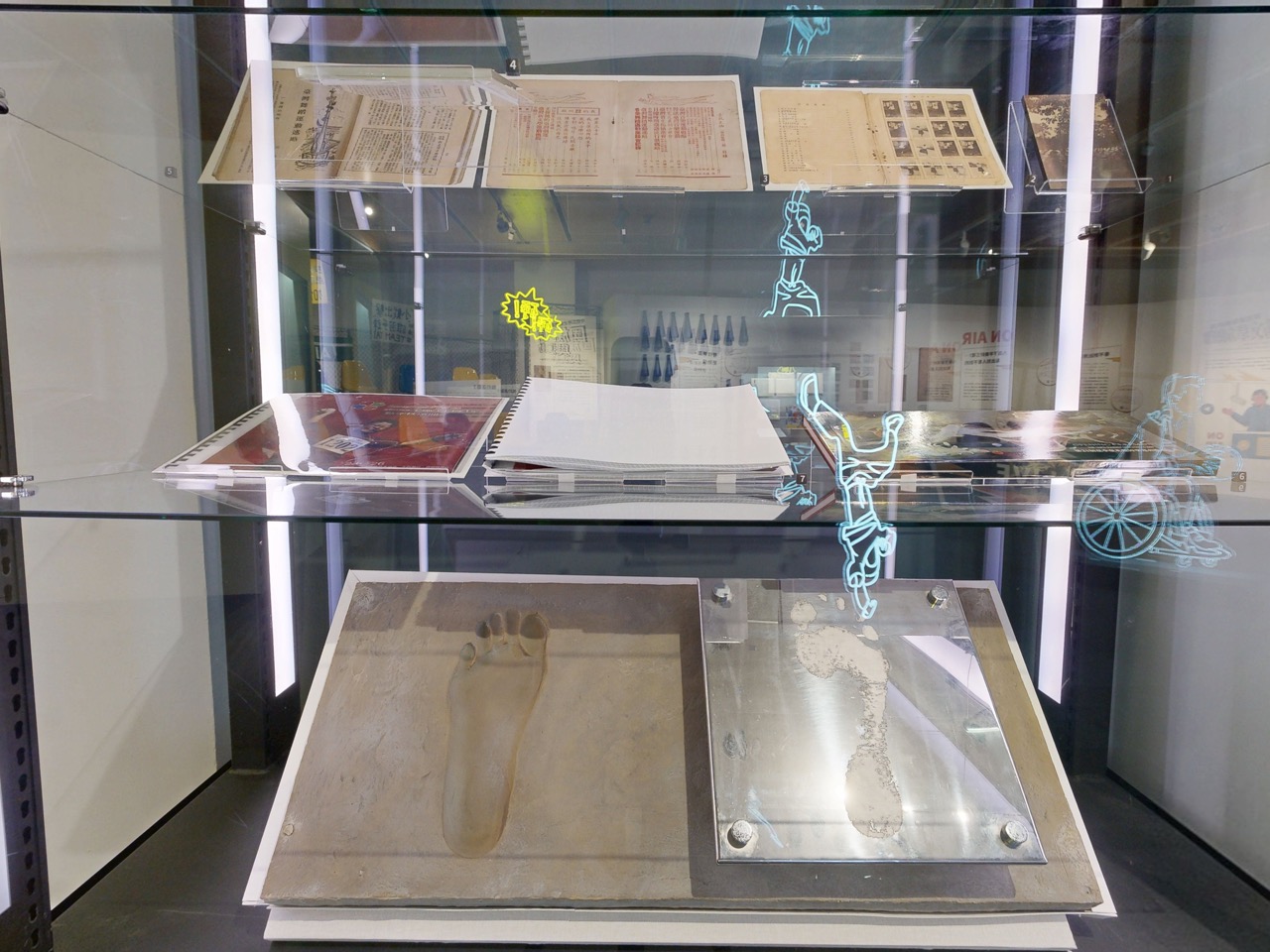
Cast of Yang Chuan-kuang's Footprint
This cast of Yang Chuan-kuang's footprint, along with that of his handprint and his statue,
is preserved in the National Sports Training Center. Known as the "Iron Man of Asia,"
Yang won the silver medal in the decathlon at the 1960 Rome Olympics.
(Courtesy of the National Sports Training Center)
3-1 Gender
"Girls shouldn't play sports!" "You play like a sissy." Such sayings, heard by many in their childhood, reinforce the masculine image of sports while discouraging participation. Many sports events initially restricted women’s participation.
With the “foot liberation” movement of the Japanese colonial era, women began to break free from the restrictions of foot binding and compete with other athletes on the track and in the stadium. Gradual progress toward gender equality has opened sports to all genders and sexual orientations. Today, audiences witness a diverse variety of athletic forms in both competitions and sports broadcasts. Respecting gender differences allows everyone, regardless of gender or orientation, to enjoy the pleasure of sports.
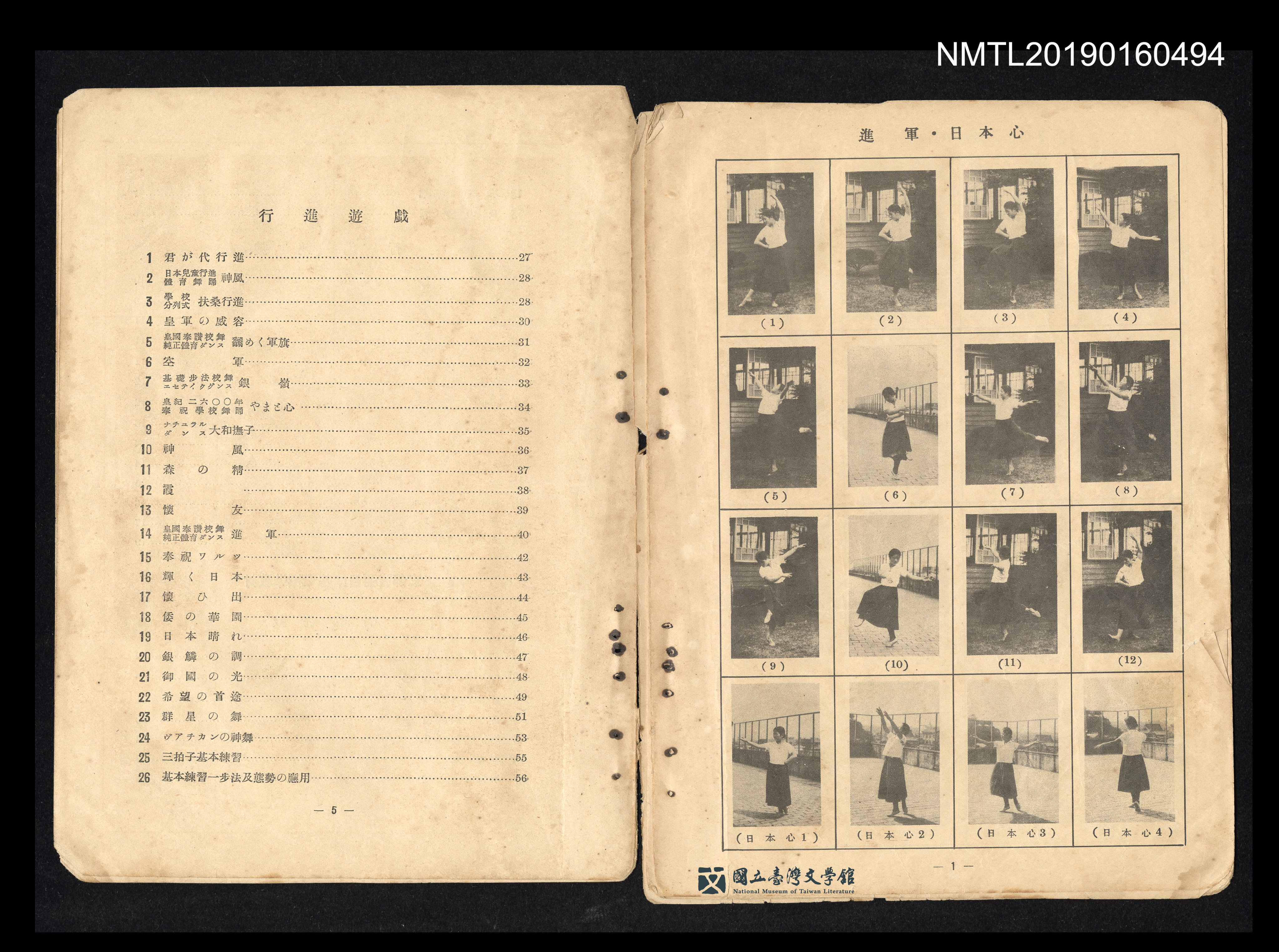
Latest P.E. Dance Textbook, Volume 9
The museum holds a copy of Volume 9 of Latest P.E. Dance Textbook,
which is organized into three sections: Photo Guidance, Sheet Music, and Movement Instructions.
Advance: Japanese Spirit is the first two sets of movements in the Photo Guidance section. In the photos,
women raise their arms and move them from side to side while alternately lifting and tapping their feet.
(Collection of the National Museum of Taiwan Literature / Donated by Lin Chang-feng / Accession no. NMTL20190160494)
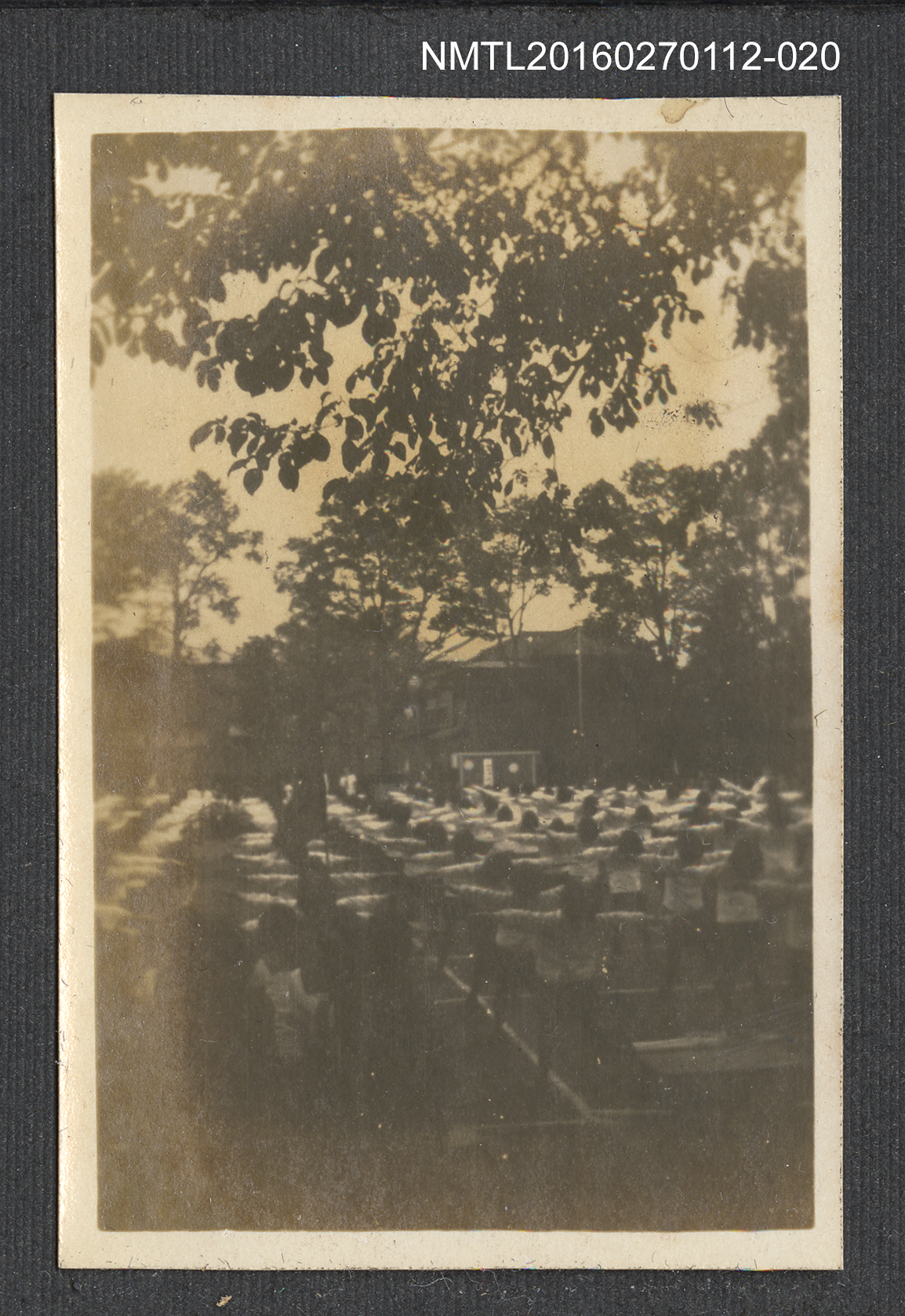
Photo of Yen Pi-hsia During Her Studies at Japan Women’s University
Yen Pi-hsia, born into the Yen family of Keelung, married Dr. Wei Huo-yao in 1934.
In Interview Records with Mr. Wei Huo-yao , Yen Pi-hsia recalled that daily life at Japan Women’s University was strictly regulated by the school.
In the photo, female students are wearing matching uniforms and performing movements in perfect unison.
(Collection of the National Museum of Taiwan Literature / Donated by Wei Ju-lin / Replica, accession no. NMTL20160270112-020)
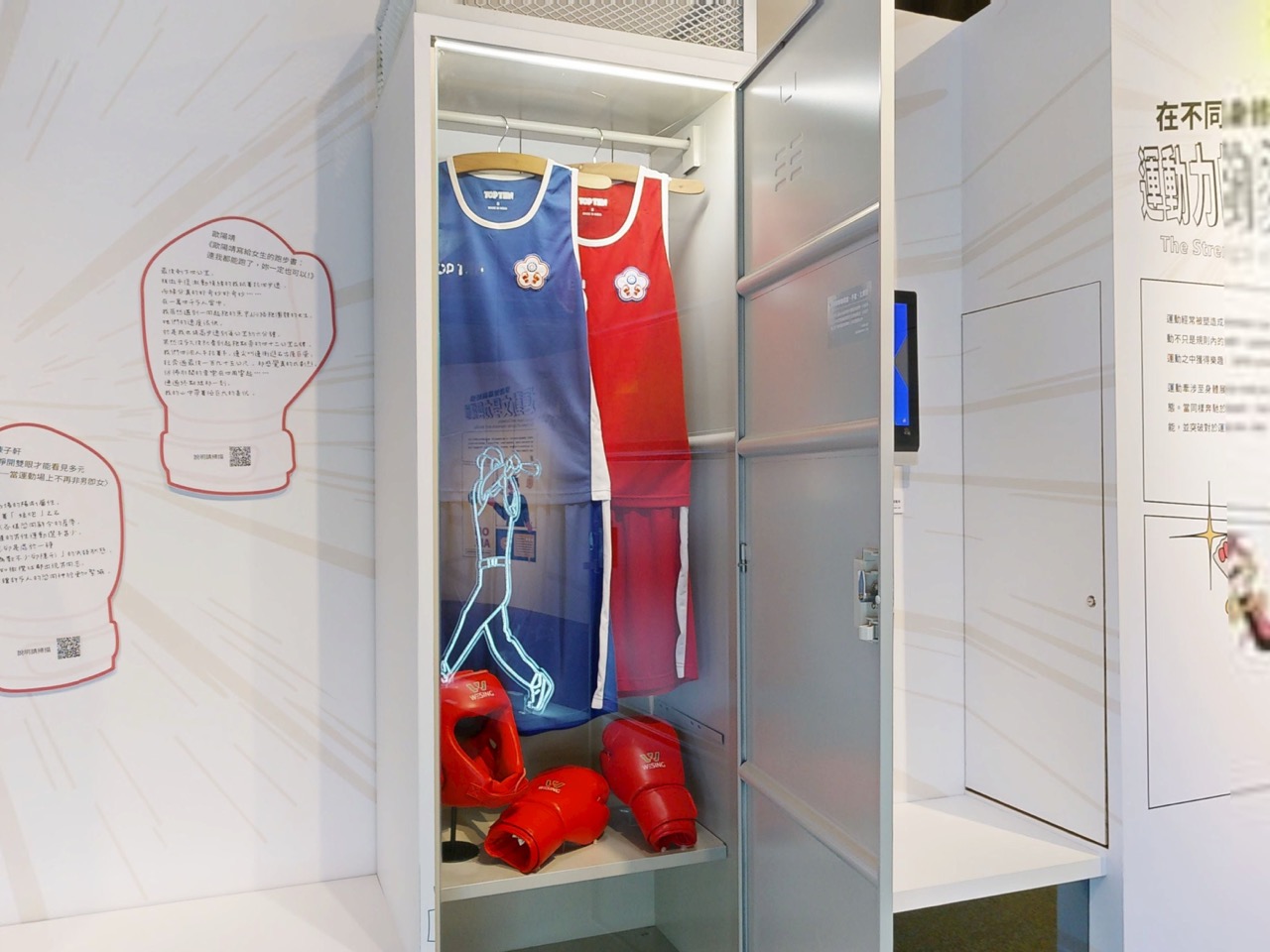
Lin Yu-ting's Boxing Headgear, Gloves, and Competition Uniform
The National Sports Training Center holds several of Lin Yu-ting's uniforms and medals.
Despite controversy over gender testing at the 2024 Paris Olympics,
she stayed focused on the task at hand and won Taiwan’s first Olympic gold in boxing.
(Courtesy of Lin Yu-ting / Held by the National Sports Training Center)
3-2 Age
Professional athletes typically peak in early adulthood, and while a few continue training, competing, and achieving success, many retire to coaching or other roles, passing on their experience. Exercise itself has no age limit, and each person can choose activities suited to their abilities. Taiwan has a proud history in youth baseball, and many students participate in baseball, basketball, and other sports alongside their school physical education classes. While high-intensity exercise may be difficult for older adults, walking, hiking, or senior-focused fitness programs demonstrate that age is not a barrier. Although more effort is needed to create universally accessible exercise environments, individuals of all ages can find sports they are willing to
engage in.
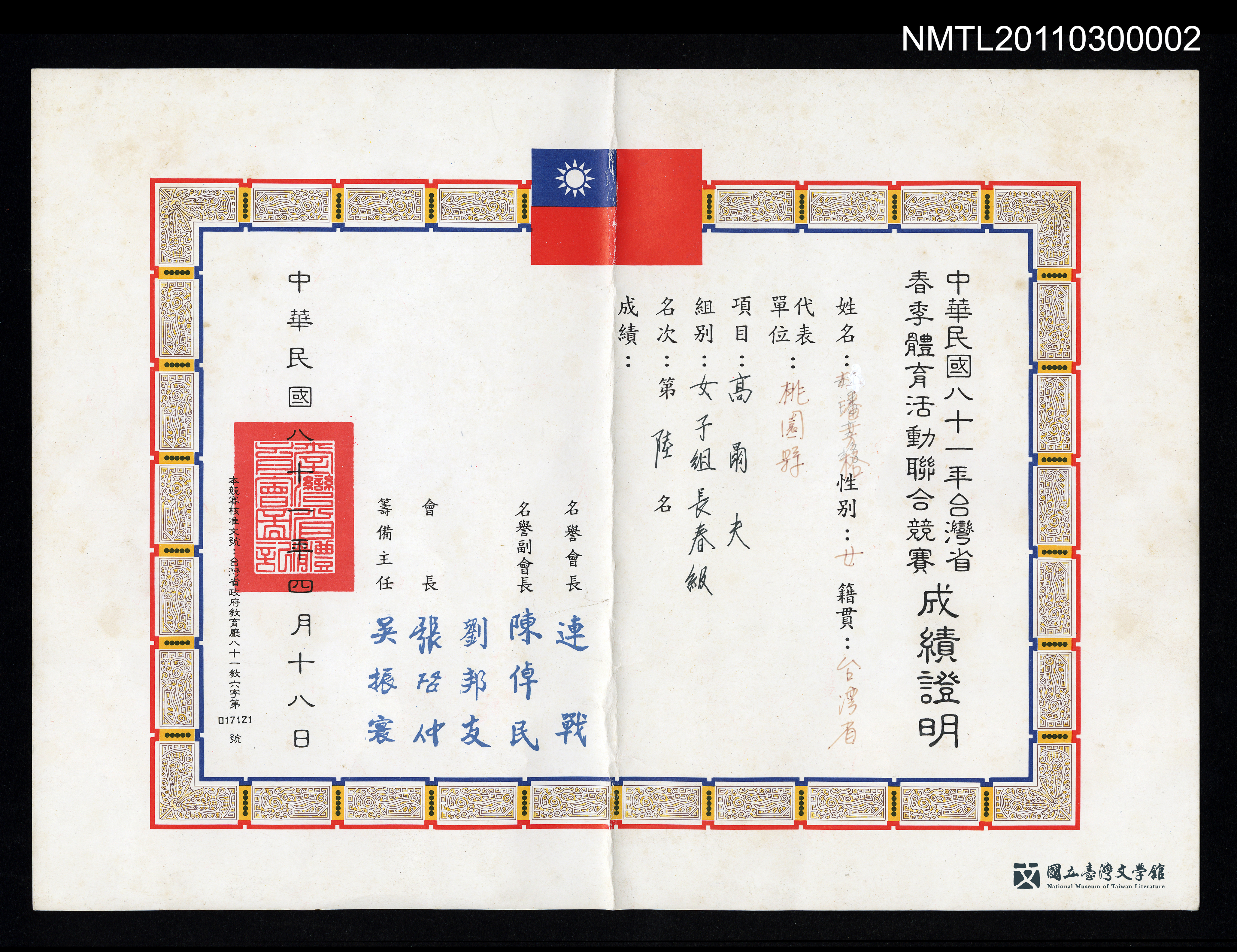
Dupan Fangge's Certificate of Achievement from the 1992 Taiwan Provincial Spring Sports Joint Competition
In 1992, Dupan Fangge participated in the Taiwan Provincial Spring Sports Joint Competition
and placed sixth in the Women’s Senior Category of the golf event. Both Dupan Fangge and her husband,
Dr. Tu Ching-shou, were avid golfers. She was over sixty years old when she received this certificate,
yet she continued to train diligently for the competition, maintaining her vitality through sport.
(Collection of the National Museum of Taiwan Literature / Donated by Dupan Fangge / Accession no. NMTL20110300002)
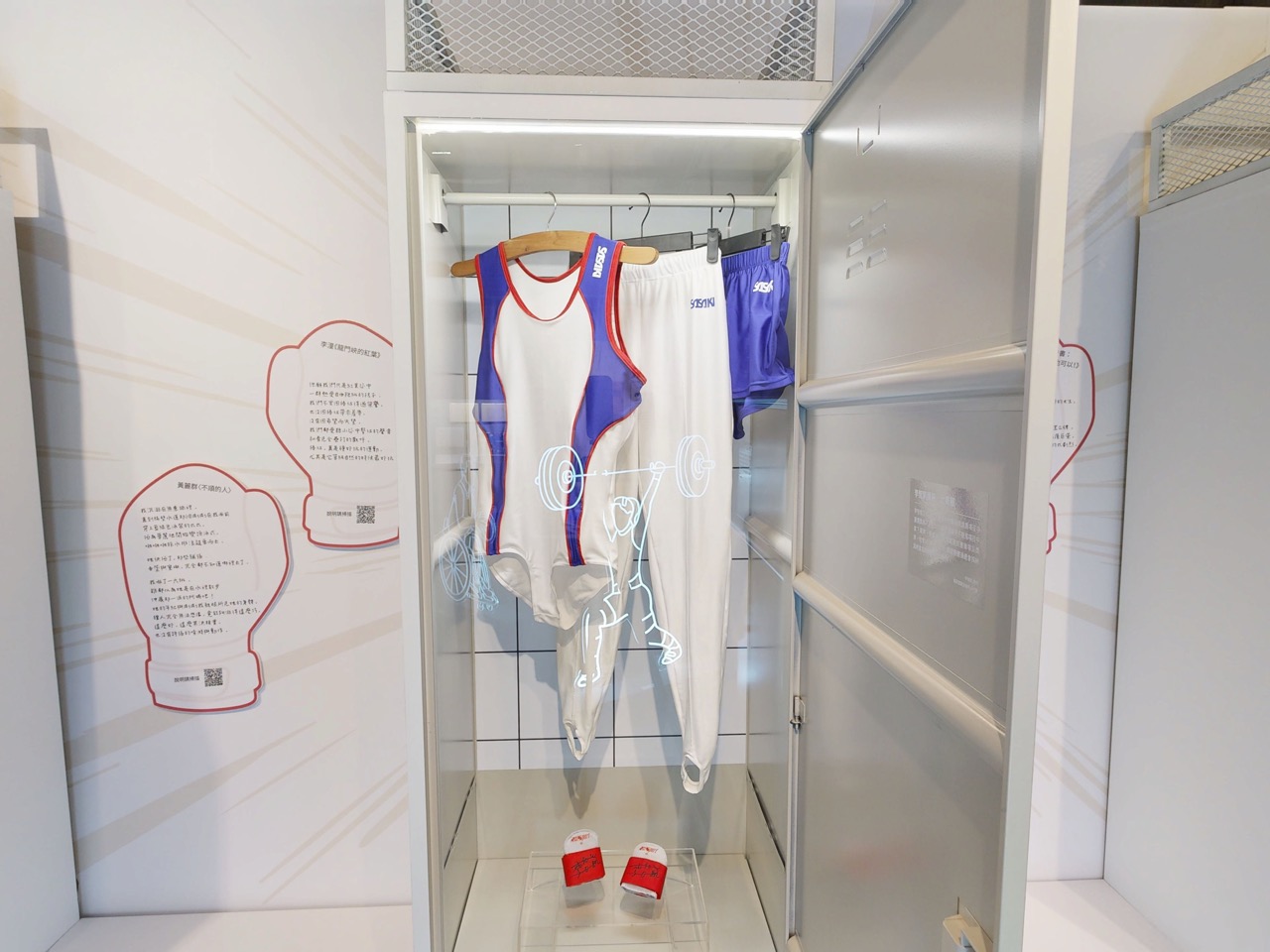
Li Chih-kai's Wrist Guards and Competition Uniform
Li Chih-kai has won numerous medals in pommel horse and vaulting events worldwide and secured silver
in men’s pommel horse at the 2020 Tokyo Olympics, Taiwan’s first Olympic medal in artistic gymnastics.
His "Thomas Flare" move was so exemplary that it was adopted as a teaching model by the International Gymnastics Federation.
(Courtesy of Li Chih-kai / Held by the National Sports Training Center)
3-3 Limitations and Disabilities
Exercise challenges the body’s limits, but also carries the risk of injury. Athletes facing injuries or illness must invest time and willpower to coexist with or overcome limitations. These limitations come in various forms. After each Olympic Games comes the Paralympic Games, designed for athletes with disabilities. Different physical or mental disabilities do not prevent athletic achievement. With the help of assistive devices and training, people with different bodies can still compete on the field.
We applaud the efforts of these athletes while remembering the daily challenges they face. Only by respecting bodily
diversity can we experience an equally rich array of competitions.
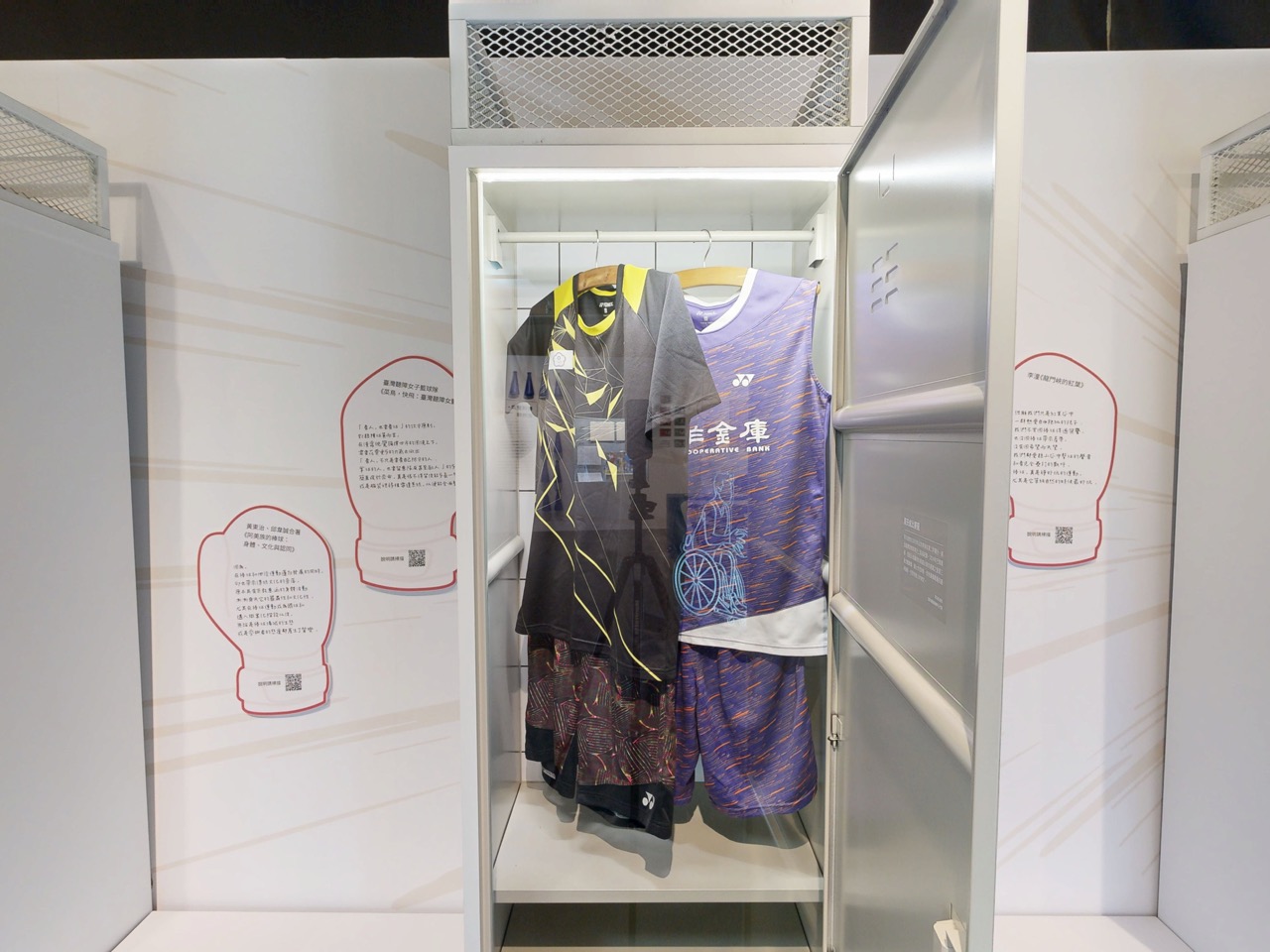
Chou Tien-cheng's Competition Uniform
Chou Tien-cheng set Taiwan’s best record in badminton men’s singles, with a world ranking of 2 in 2019. At the 2024 Paris Olympics, his third Olympic appearance after Rio and Tokyo, he reached the quarterfinals while battling cancer, earning widespread acclaim.
(Courtesy of Chou Tien-cheng / Held by the National Sports Training Center)
3-4 Ethnicity
Before modern sports were introduced to Taiwan, Indigenous peoples had already developed their own unique physical skills and ways of teaching them. These included distinctive hunting techniques, or activities like the Tao people’s canoeing, which are deeply embedded in their cultural and historical contexts, having been learned and passed down through generations. Although these activities can resemble modern sports, their ethnic and cultural specificity must be recognized. From Amis players on the Kano baseball team to those achieving remarkable results in recent Universiade and Olympic Games, Indigenous athletes
have long excelled in Taiwan. Nevertheless, it is important to avoid stereotypes and understand individual and
cultural differences.
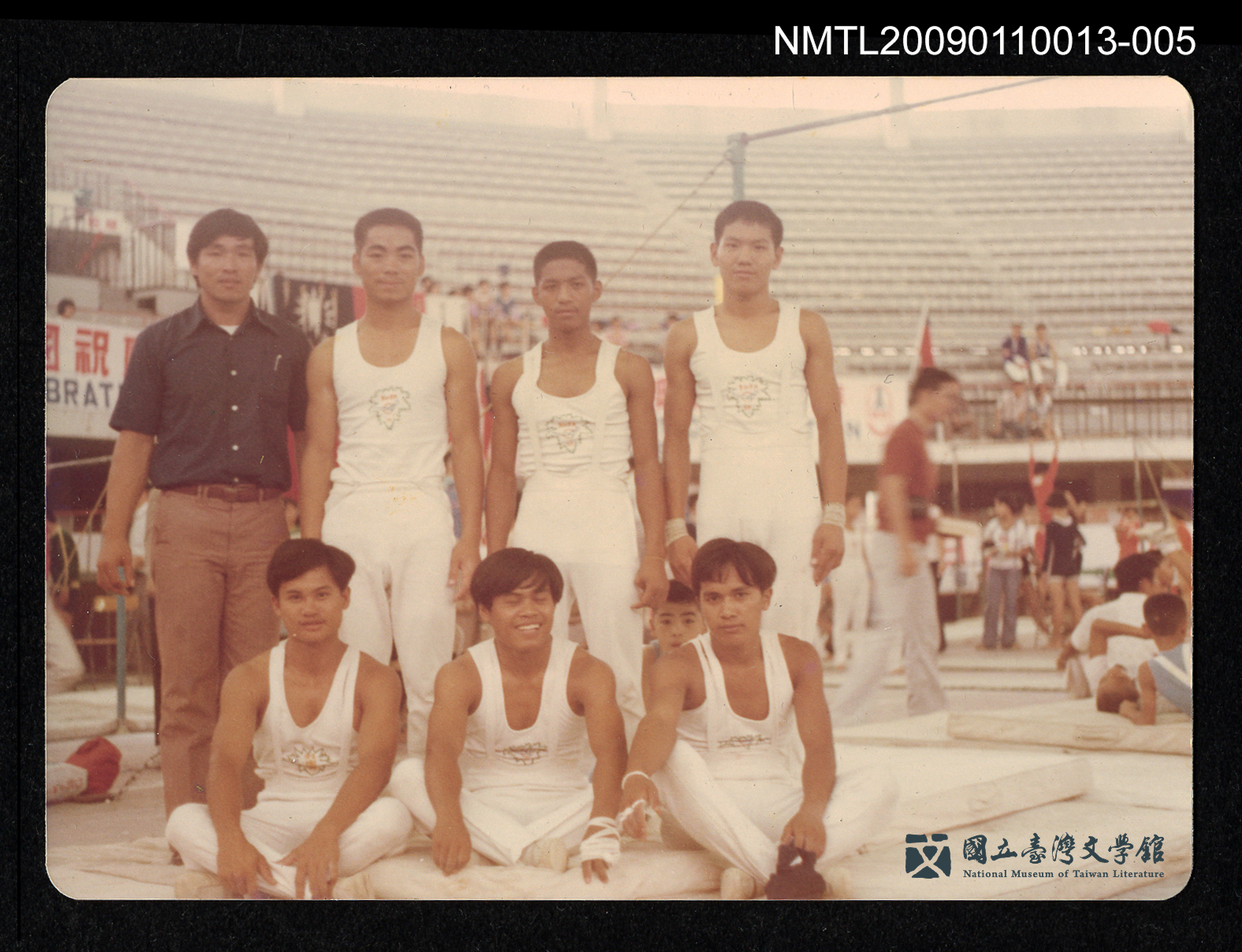
Husluman Vava Sports and Competition Photos 1
Husluman Vava (front row, first from right) posing in gym attire with teammates.
(Collection of the National Museum of Taiwan Literature / Donated by the family of Husluman Vava / Replica, accession no. NMTL20090110013-005)
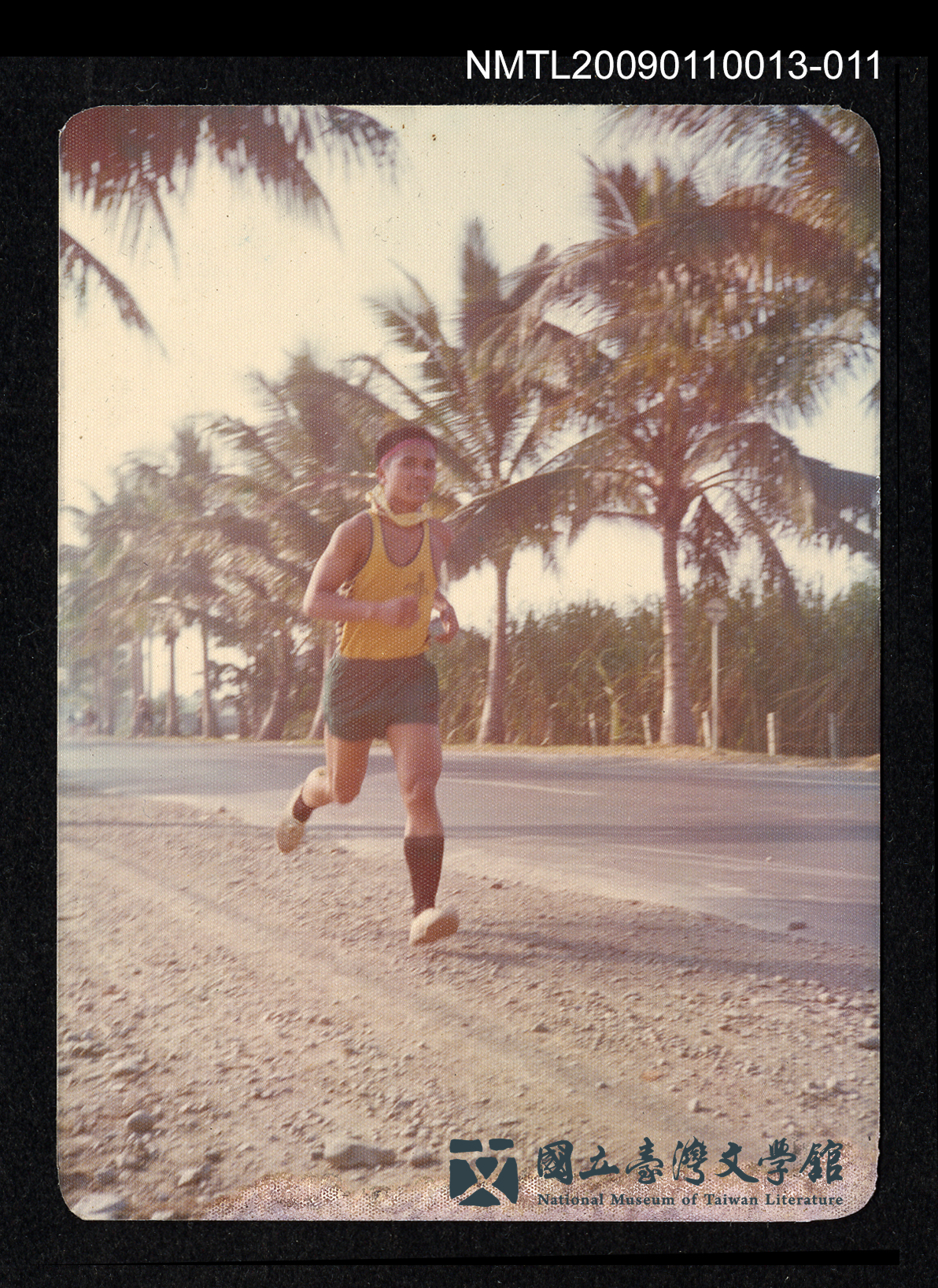
Husluman Vava Sports and Competition Photos 2
Husluman Vava running in a yellow sports vest, with bronze-toned muscles and a determined expression.
(Collection of the National Museum of Taiwan Literature / Donated by the family of Husluman Vava / Replica, accession no. NMTL20090110013-011)
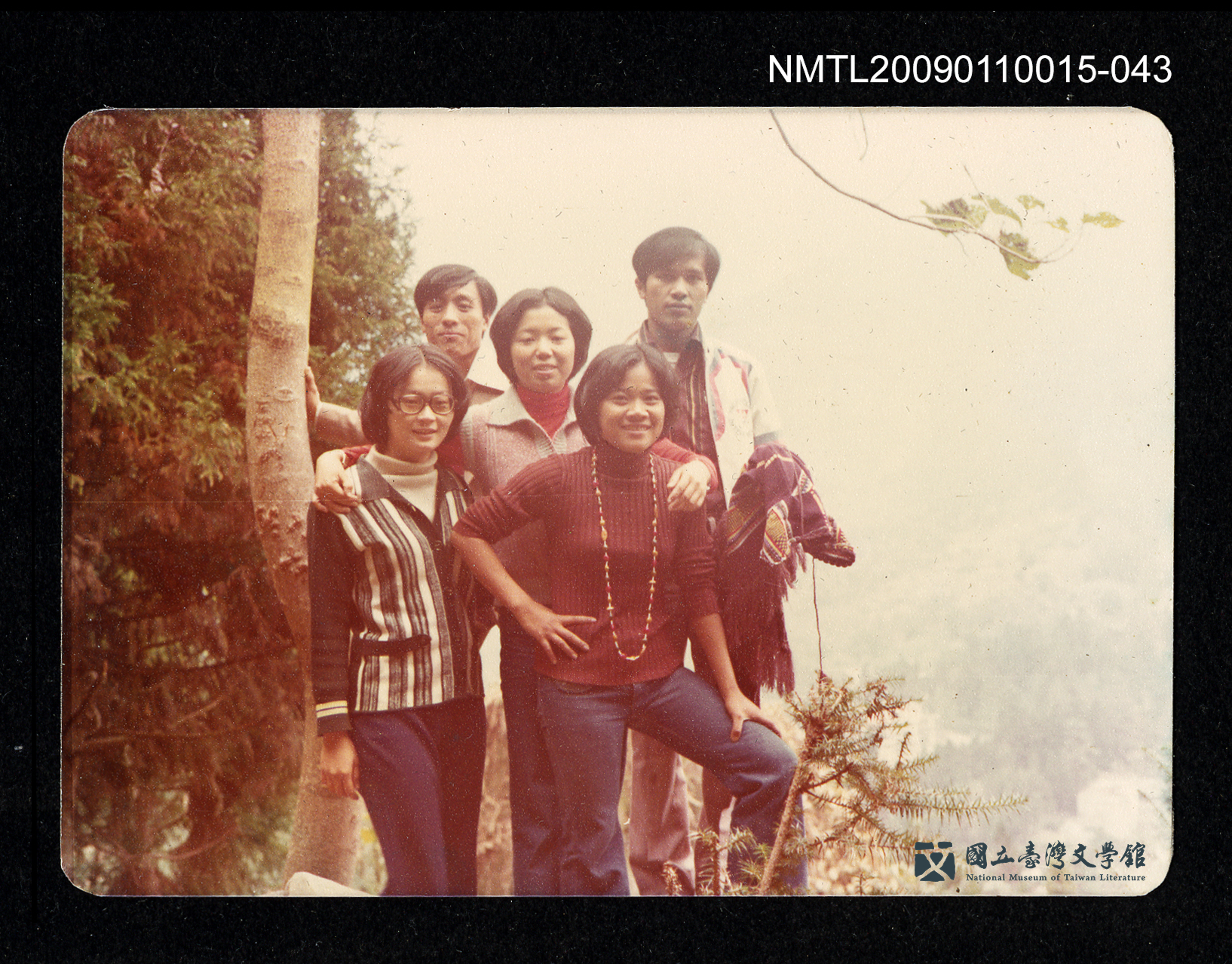
Group Photo of Husluman Vava Mountain Climbing with Friends
Husluman Vava (first from right) photographed with friends during a mountain climb.
(Collection of the National Museum of Taiwan Literature / Donated by the family of Husluman Vava / Replica, accession no. NMTL20090110015-043)
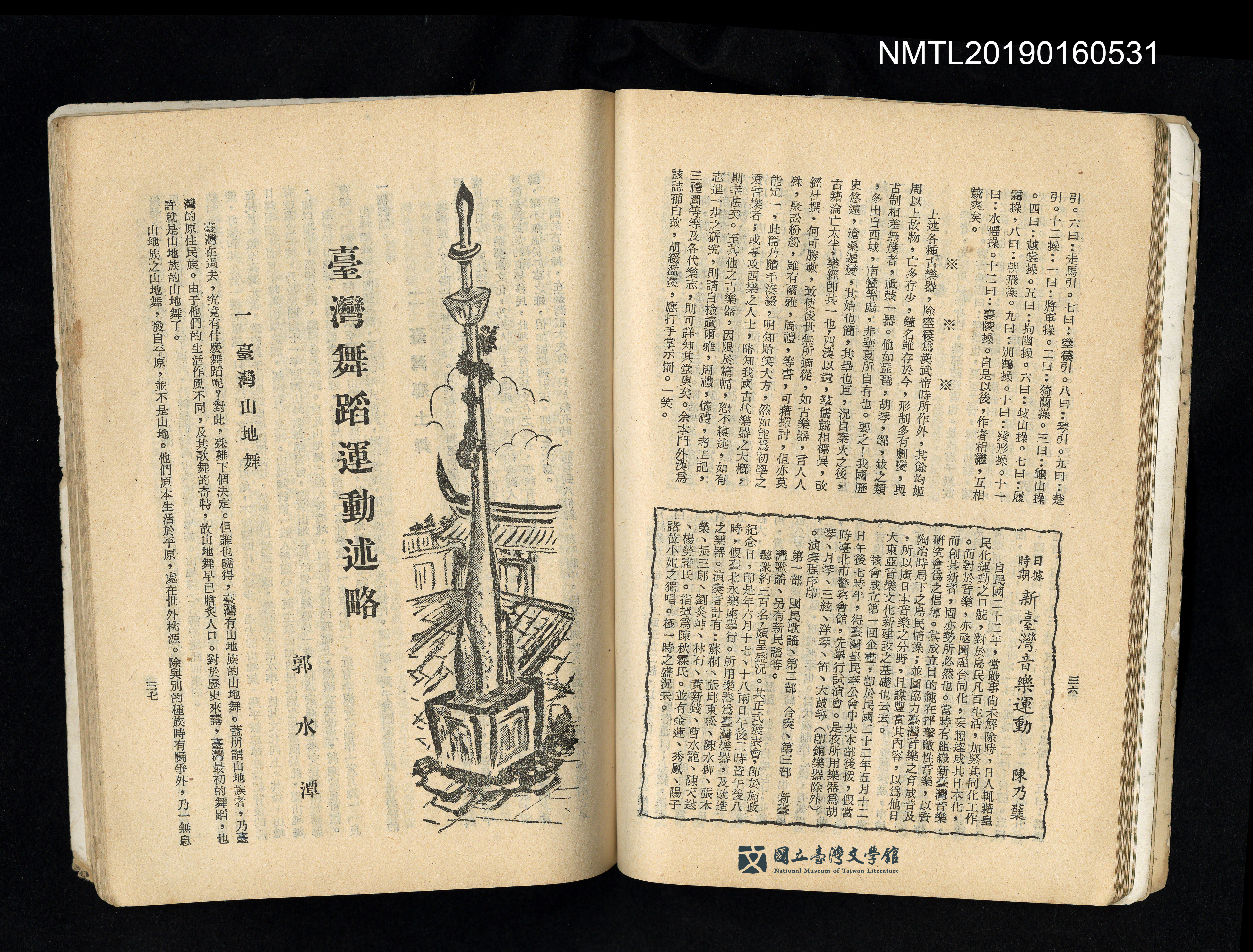
Taipei Cultural Relics Quarterly, Vol. 4, No. 2 / Kuo Shui-tan “A Brief Account of Dance and Sports in Taiwan”
This article was included in a 1955 issue of Taipei Cultural Relics. Author Kuo Shui-tan provides a historical overview of dance development in Taiwan,
covering highland Indigenous dances, local folk dances, dances during the Japanese drama period, and postwar dance styles and cultural context.
At the end of the article, the author introduces more than ten prominent local dancers.
He notes that their training in Western dance forms (ballet and pointe) brought new perspectives to ethnic dances,
and calls on dancers to maintain awareness of their promotion of national cultures.
(Collection of the National Museum of Taiwan Literature / Donated by Lin Chang-feng / Replica, accession no. NMTL20190160531)

